Click here to read the article in German
In this article:
- Solo trekking in Nepal: What the officials say
- Breaking down Nepal’s new trekking rules
- These popular trekking areas in Nepal now require guides
- Solo trekking lives on in the Everest region
- Reality check: No one follows the new guide rule
- Nepal’s solo trekking ban: Necessary move or money grab?
- 3 reasons why the ban on solo trekking is a bad idea
- Will independent trekking in Nepal survive?
Update May 2024: The official rule requiring hikers to use a guide is not being enforced. I confirmed this during my recent trip to Nepal. All the information in this article is based on my personal experiences on-site. Permits are still being issued – details below.
Nepal – the mountainous nation in the Himalayas is considered by many to be the birthplace of trekking. Boasting the highest peaks on the planet, the country is a natural drawing point for mountain enthusiasts, backpackers and trekking fans all over the world eager to see the towering 8,000-meter ice giants with their own eyes.
Well… it just needed a small press release to throw all of that into disarray.
As of April 1, 2023, individual trekking tours are officially no longer allowed in Nepal. Anyone who wants to hike in the Himalayas now needs a licensed guide. Grabbing your backpack and setting off on your own, like I did on the Annapurna Circuit? That’s officially no longer permitted in Nepal.
It’s been more than a year since this announcement caused an uproar and a lot of frustration. Since then, one of the most common questions I get on my blog about trekking in Nepal is: Am I still allowed to trek without a guide? The short answer: No, technically not, but somehow yes. Sounds complicated? That’s exactly why I wrote this article.
So let’s dive in and take a closer look!
Solo trekking in Nepal: What the officials say
First, let’s quickly go over the official version. In this case, that’s the press release from the Nepal Tourism Board. The Tourism Board is an organization that works with the Nepali government to issue permits for treks in the country’s mountain regions. Here’s a screenshot of the press release:

The press release clearly states:
Trekkers are required to obtain services of licensed Ttrekking guide and to obtain TIMS card through authorized trekking agencies registered with the government of Nepal. The new provision shall come into effect post March 31, 2023.
A quick explanation: The TIMS card (Trekker Information Management System) is a form designed to help authorities track where and when trekkers are in a particular region. The card is supposed to be checked at park entrances and various checkpoints along the route. Previously, you could simply pick up the form at the tourism office by filling it out, paying the fee and providing your contact information.
This used to be a relatively straightforward process and that’s exactly how I handled it when hiking the Annapurna Circuit. However, the TIMS permit was never actually checked anywhere – only the additional permit required for the specific conservation area was inspected. Therefore, many people have long criticized the TIMS card as a money-making scheme. The argument: a good idea in theory but it doesn’t work in practice because trekkers aren’t consistently monitored.
Budget trekking in Nepal: Is it still possible?
According to the press release, the fees for the TIMS permit are being raised to 2,000 Nepali rupees for Western tourists. I found this a bit misleading as I already paid exactly this amount in 2022. The prices for the additional permits required for specific conservation areas remain unchanged for now. For example, I paid another 3,000 rupees for the Annapurna region.
Anyway… if the rule requiring trekking with a guide were ever to be strictly enforced, these costs would pale in comparison to what you would need to pay for guides. Roughly speaking, daily expenses for a guide would amount to at least 25 Euro per day, possibly more depending on the level of comfort and support. On top of that, you might also need to hire porters.
For my 30-day+ trek, I would have spent roughly 1,000 Euro just for a guide, with accommodations and meals likely costing about the same again. Sure – that’s still kind of acceptable for an entire month filled with amazing experiences. But as a budget-friendly destination for backpackers and trekkers traveling on a shoestring Nepal would pretty much be out.

Reiseführer Ladakh, Jammu und Kaschmir
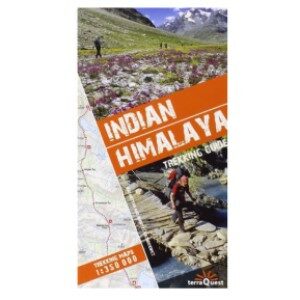
Trekking im Indischen Himalaya
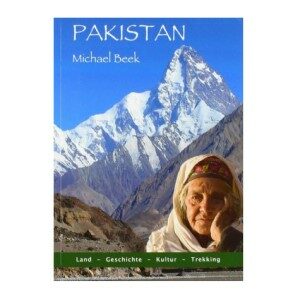
Pakistan: Reise- und Trekkingführer
Breaking down Nepal’s new trekking rules
Let’s go through the press release again and examine exactly what it says:
- Trekkers are required to have an officially licensed guide starting April 1, 2023. This means the guide must be registered with the Trekking Agencies Association of Nepal (TAAN).
- The new measure applies to all trekkers. Not just solo trekkers but also groups. Previously, certain trekking regions, like the Manaslu Circuit, were closed to solo trekkers but still allowed groups of two or more.
- The rule applies to all mountain national parks in Nepal where a TIMS card was already required before.
- The FAQ also specifies that the rule only applies to foreign trekkers. Nepali citizens are exempt.
- The measure was implemented for the safety of tourists. It’s intended to address issues like trekkers getting lost, falling ill, or encountering natural disasters. A guide is supposed to ensure that trekkers have immediate access to professional assistance.
- Additionally, the rule aims to create new employment opportunities in the tourism sector while also curbing the use of unlicensed guides.
- The (complex) bureaucracy for expeditions to the high Himalayan peaks remains unchanged. For climbs above 6,500 meters, you will still need an officially registered Sirdar and, if necessary, a liaison officer for permits.
Read more: Check out my guide fo the famous Annapurna Circuit.
Is this strengthening tourism of stifling it?
That’s up for debate. When I was speaking with owners of smaller lodges in Nepal, many expressed skepticism, often saying things like:
“This is a very bad decision. If this happens, fewer people will come in the future. This rule, if it helps anyone, only helps the big agencies.”
It’s worth noting that many trekking agencies work directly with certain lodges and send their guides and tourist groups there exclusively. For these lodges, independent trekkers don’t matter much since their business runs either way. However, smaller hostels and tea houses, which rely more on individual trekkers might be more adversely affected.
These popular trekking areas in Nepal now require guides
The Tourism Board has published an FAQ on its website listing the regions where a guide and TIMS permit are required. Essentially, this applies to all well-known trekking areas.
| Region | Trek |
|---|---|
| Kanchenjunga region | 1. Kanchenjunga Base Camp via Sele La Pass Trek 2. Kanchenjunga Basecamp Trek 3. Kanchenjunga Base Camp Nango Pass Trek 4. Lumba Sumba Pass Trek |
| Makalu Barun area | 1. Makalu Basecamp Trek 2. Sherpani Col Pass Trek |
| Everest region | 1. Everest Basecamp Trek 2. Gokyo Trek 3. Chho La Pass Trek 4. Gokyo Renjo La Pass Trek 5. Three Passes Trek 6. Everest View trek 7. Mera Peak Trek 8. Amphu Labtsha Pass |
| Rolwaling region | 1. Rolwaling Trek 2. Tashi Labtsha Pass Trek |
| Panchpokhari Bhairabkunda area | 1. Panchpokhari Trek |
| Helambu region | 1. Helambu Trek 2. Goshaikunda Trek |
| Langtang region | 1. Langtang Trek 2. Langtang Gosaikund Trek 3. Tamang Heritage Trek 4. Tamang Heritage Langtang Trek 5. Ganja La pass Trek 6. Tillman Pass |
| Ganesh Himal-Ruby Valley area | 1. Ganesh Himal – Ruby Valley Trek |
| Manaslu region | 1. Manaslu Circuit Trek 2. Manaslu – Tsum Valley Trek 3. Tsum Valley Trek |
| Annapurna region | 1. Annapurna Circuit Trek 2. Nar Phu Annapurna Circuit Trek 3. Mesokanto / Tilicho Pass Trek 4. Poon Hill-ABC Trek 5. Khopra Trek 6. Mardi Himal Trek 7. Sikleh Tara Hill Trek |
| Mustang region | 1. Upper Mustang Trek 2. Sarebung Pass Trek |
| Dhaulagiri region | 1. Round Dhaulagiri |
| Dolpo region | 1. Upper Dolpo – Jomsom Trek 2. Upper Dolpo Trek 3. Lower Dolpo Trek 4. Kagmara Pass Trek |
| Humla region | 1. Humla Limi Valley Trek |
So yeah… these are basically all trekking regions in Nepal – even the lesser known ones.
The following areas are exempt from the rule:
- Kathmandu Valley (except for Shivapuri National Park)
- Outskirts of Pokhara.
- Hiking around the larger cities is also still allowed without a guide.
- Additionally, individual travel and bus rides to Muktinath are reportedly still possible without a guide (but with a TIMS permit). The temple is a popular destination for Indian pilgrims.
An important note: Even before April 1, 2023 there were several regions in Nepal where access was only permitted with special authorization and a guide, known as the restricted Areas. These include places like Upper Mustang and Dolpo (overview). Solo trekking was already prohibited in these regions. With the new regulation, the ban is now being extended to all trekking areas – even to those that were previously accessible to individual trekkers.
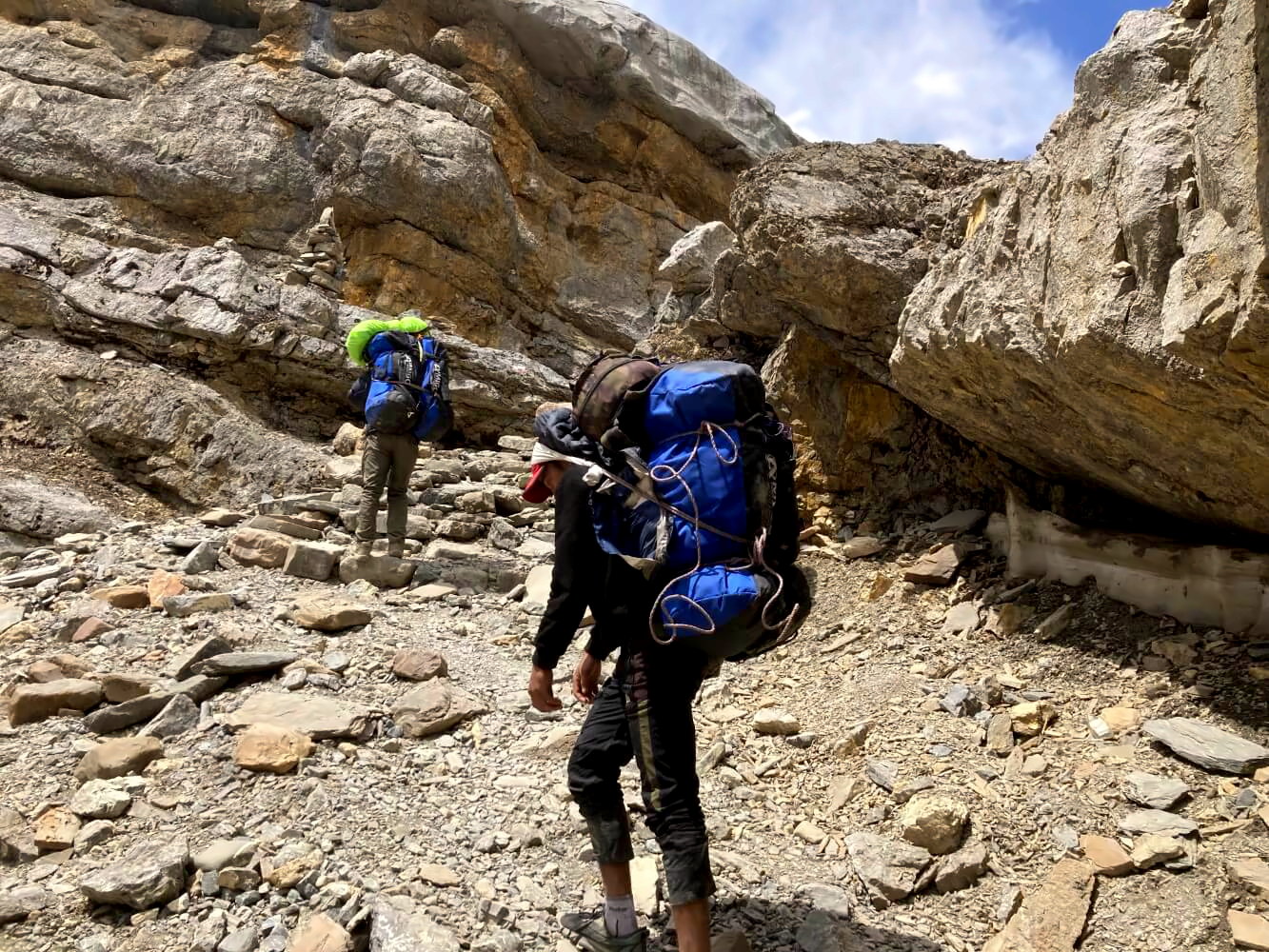
Solo trekking lives on in the Everest region
A major exception to the new guide requirement is the well-known Khumbu region, home to Mount Everest – one of Nepal’s most popular trekking areas. Currently, in this region, you don’t need a TIMS card but instead require a local permit, the “Khumbu Trek Card”, as well as a separate permit for Sagarmatha National Park.
While the Nepal Tourism Board explicitly mentions this region in their new guidelines and states that a guide is required for the area and all popular treks (Everest Base Camp Trek, Gokyo Lakes, Three Passes Trek, etc.), the local government of the Khumbu district states exactly the opposite. They intend to continue allowing individual trekkers access to the region.
Rules for independent trekkers in Khumbu
The Khumbu District administration has posted an overview with the relevant information on their Facebook page. Here’s the screenshot:
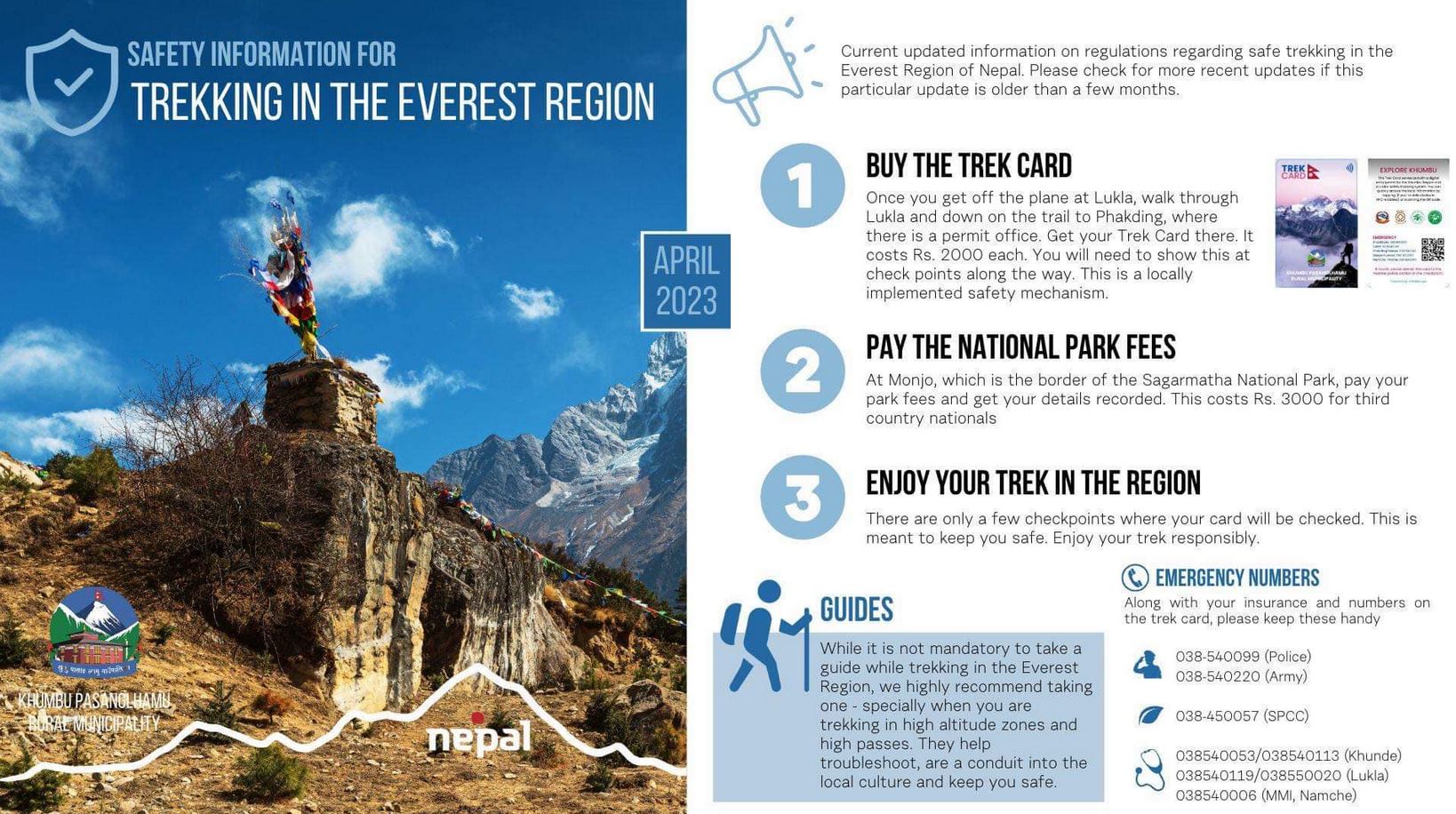
- According to this, a guide is recommended for trekking tours but not mandatory.
- Additionally, a Trek Card is required, costing 2,000 rupees and checked at various checkpoints.
- There is also an entrance fee of 3,000 rupees for Sagarmatha National Park.
- Trekkers are advised to stay informed and check for current updates.
The provincial administration, Khumbu Pasanglhamu Rural Municipality, has issued its own press release on this matter:
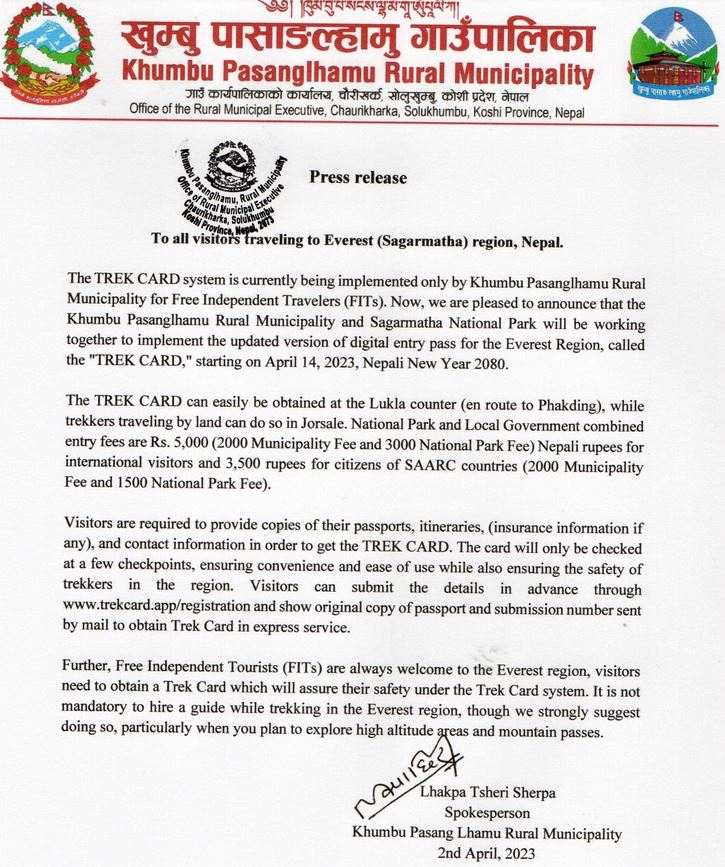
According to this, an updated version of the Trek Card will be offered starting April 14, 2023. The Trek Card will be available in Lukla or Jorsale for a total of 5,000 rupees. The press release also explicitly states that individual travelers (Free Individual Trekkers, FIT) will continue to be warmly welcomed in the Everest region.
The Kathmandu Post quoted a high-ranking official who clearly stated that there are no restrictions for solo trekkers in the Everest region. Quote: “We reject the decision of the Nepal Tourism Bureau.” If the Everest region is not officially exempted from the rule, the local administration intends to take the matter to Nepal’s Supreme Court to challenge the decision.
The press release of the Tourism Board creates a situation that could be quite funny if it weren`t so frustrating for trekkers trying to find out whom to believe. We now have two co-existing quasi-official documents that each claim the opposite. The only good thing: In real life, the rules are not being enforced anyway – neither in the Everest region nor on the Annapurna Circuit or in the Langtang Valley.
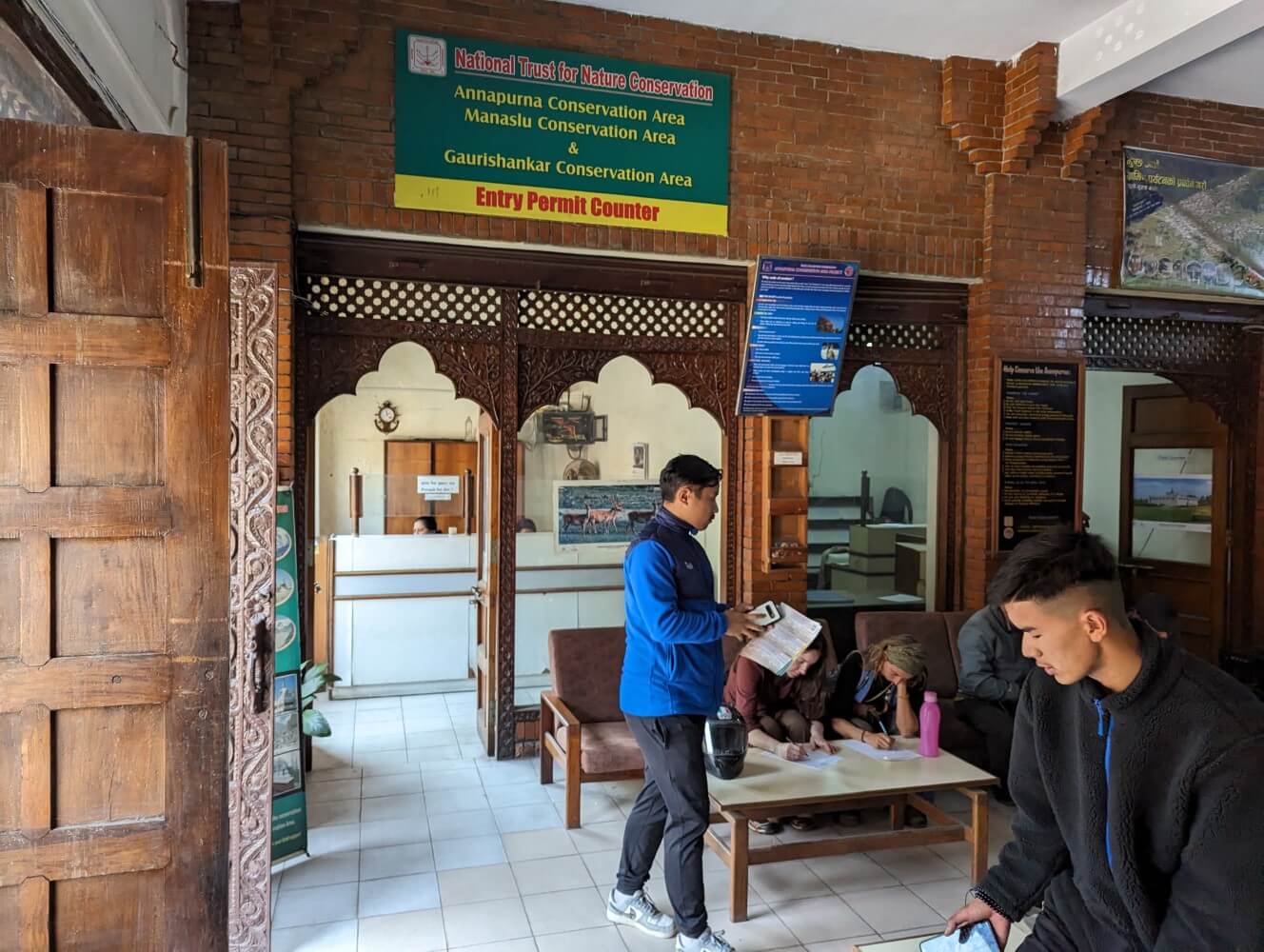
Reality check: No one follows the new guide rule
The rules mentioned above are the official version, which is also circulated on various news outlets and websites. But that’s only one part of the story. So let’s get to the question that really matters: What’s the actual situation on the ground? I was able to see this for myself recently as I spent a couple of months in Nepal again from March to May 2024 and did several treks:
- Langtang Valley Trek
- Tenzing Hillary Trek from Jiri to Lukla
- Everest Three Passes Trek
I did all these treks without a guide, entirely on my own. And it was no problem at all. In fact, the process was even easier than two years ago, since there’s no longer a TIMS form to apply for.
Langtang Trek
I got the permit for the Langtang region at the Tourism Board in Kathmandu. Yes… the same Tourism Board that says you cannot trek on your own. I just went up to the counter, said I wanted a trekking permit for Langtang, showed my passport, and paid 3,000 rupees. That was pretty much it. I didn’t have to fill out any forms or attach passport photos. Within 30 seconds I had the permit in hand.
At the entrance of the national park in Syabrubesi they checked my permit and my backpack. But again, there were no issues. The officers asked if I had a guide. When I said no, it was simply noted and that was the end of it. No one objected and the new rules were never mentioned.
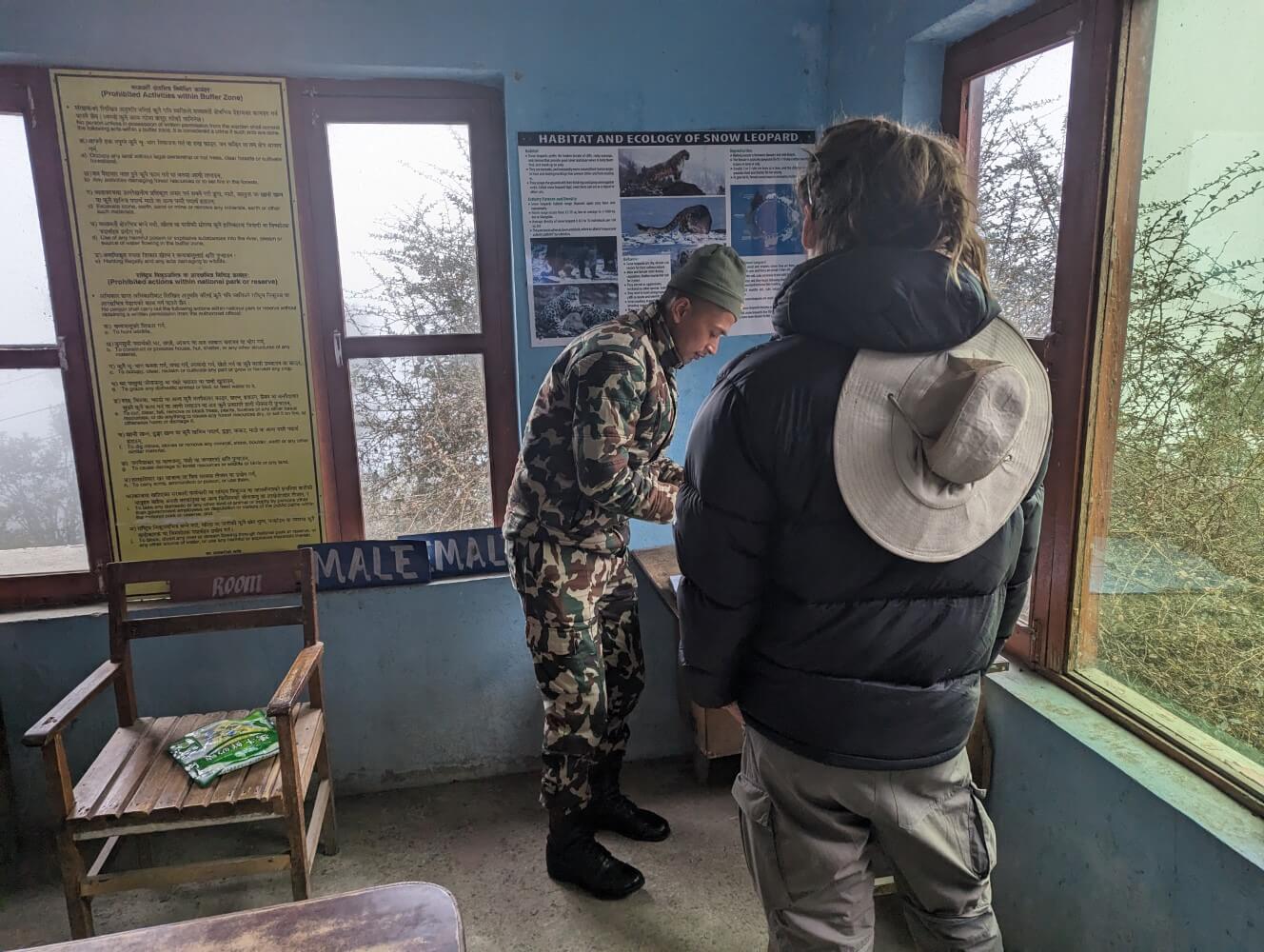
Tenzing Hillary Trek from Jiri to Lukla
For this trek I obtained the permit locally, in the village of Shivalaya. This is where the national park office for the Gaurishankar Conservation Area is located. Again, there were no problems: I paid 3,000 rupees, showed my passport, and received the permit immediately. The officers were very friendly, no one criticized that I was trekking alone.
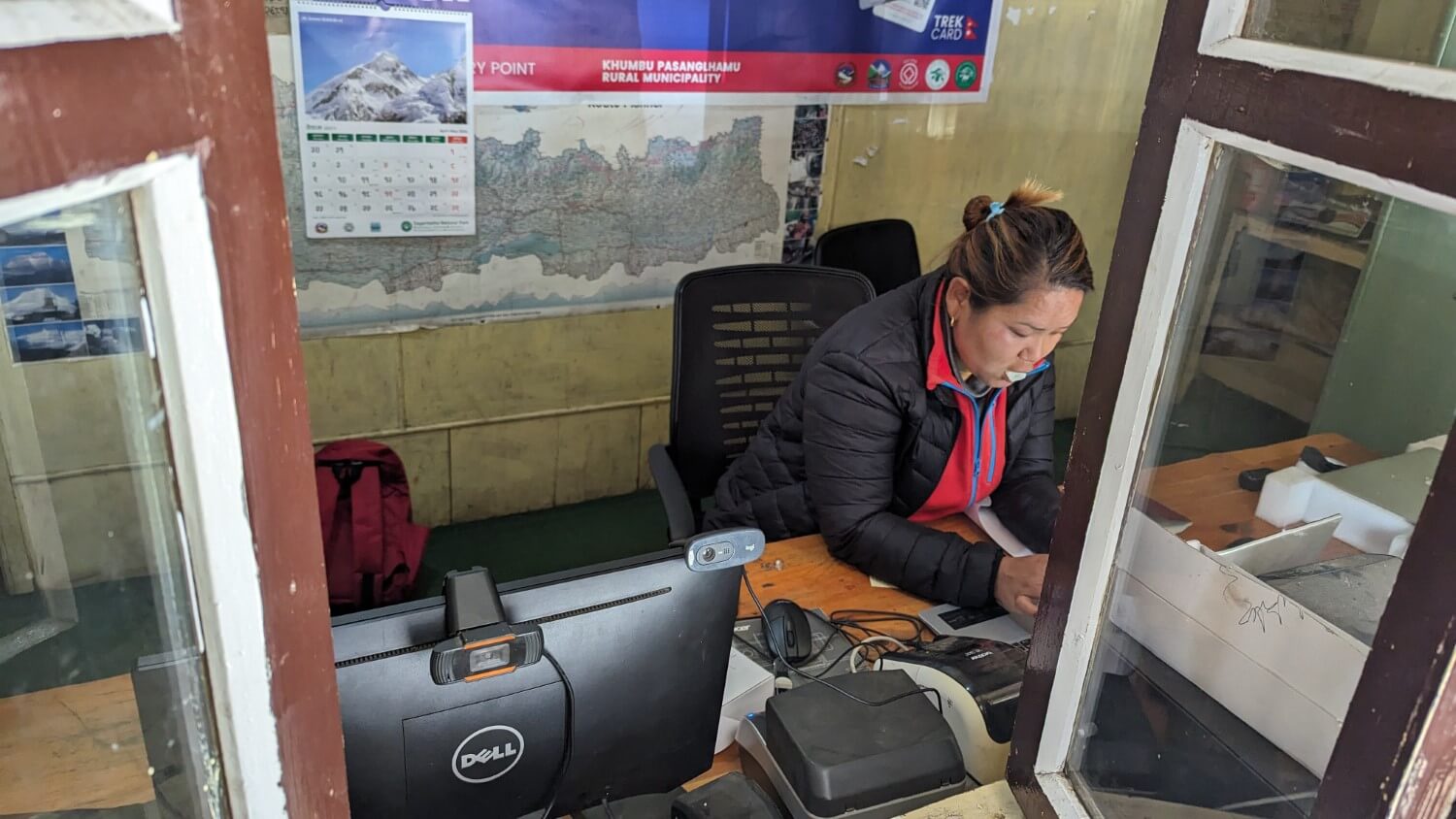
Everest Three Passes Trek
For the Everest Three Passes Trek, I obtained the permit in Monjo at the entrance of Sagarmatha National Park. There is a counter where you enter your details and the planned route with start and end dates. Again, I only needed my passport, no photos. Actually I paid only 2,000 rupees for the permit and the Khumbu Trek Card. Guide requirement: No one ever mentioned it.

Annapurna Circuit
I didn’t visit the Annapurna region this time but I met several travelers in the hostels in Kathmandu who were trekking there independently. They told me there are no issues at all for solo trekkers in that region either. The area has traditionally been very popular with backpackers and independent travelers.
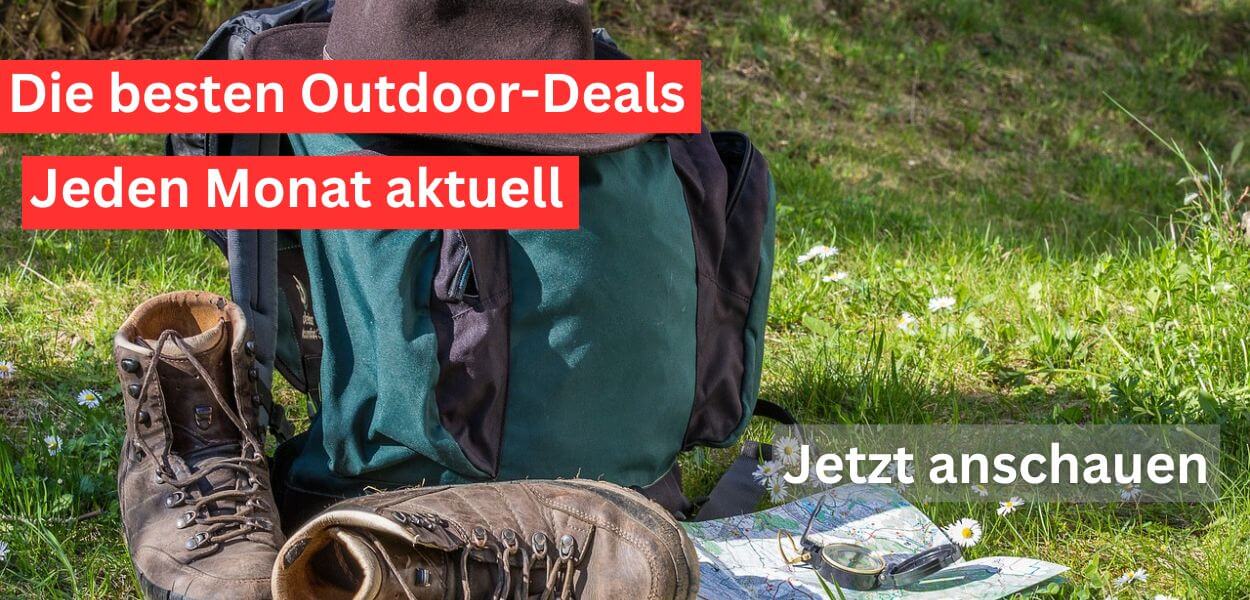
Solo trekking in Nepal still going strong
I couldn`t image this in 2023, but that’s where we are right now: The new “requirement” to trek only with a guide is being ignored by pretty much everyone in Nepal. The regulations are still listed on the Tourism Board’s website, but no one seems to care—welcome to Nepal.
Of course, nobody knows if it will stay like that forever. There are indeed national parks in Nepal where guides are mandatory. Among them, curiously enough, national parks where this rule doesn`t make any sense at all, for instance in the Shivapuri National Park right next to Kathmandu city. However, in the well-known trekking areas you can still trek without a guide without any problems if you wish.
What you should do before your trip
Before your trip check reliable forums and trekking groups on the internet for the latest updates. The best option are Facebook groups. These groups are available for all popular trekking areas like the Annapurna Circuit, Everest, and Langtang. You’ll get current, on-the-ground information from people who have recently been trekking there. This is much more reliable than vague information from news websites whose writers never research these matters on their own or from agencies with a vested interest in selling you a tour.
Nepal’s solo trekking ban: Necessary move or money grab?
As a longtime independent traveler, of course I don’t like the official ban on solo trekking in Nepal. On the one hand, because I enjoy doing these kind of treks at my own pace, because I want to stay flexible and because I don’t want to plan everything down to the smallest detail in advance. On the other hand, also as it feels like a money-making scheme.
Sure, the concerns about safety are kind of valid. Take the Annapurna region – many people and backbackers on round-the-world-trips hike pretty casually there without any trekking or backpacking experience. Many of them also underestimate the high altitudes where they are walking. I’ve experienced this firsthand several times.
I think it’s also safe to say that the Nepalese authorities can’t check every single trekker for personal experience. That would be quite unrealistic. After all, you can claim to have done all kinds of things—no one can verify that. So in that way, a general ban on solo trekking seems somewhat reasonable.
Why create new rules if the old ones weren’t enforced?
However, there’s a very strong case for the other side: with the existing TIMS system we already have a way to track trekkers’ movements and locations. That’s the whole idea of TIMS after all: people check in at various points along the route so that in case of unforeseen incidents, authorities know exactly who is where at any given time.
The only problem is, this isn’t consistently implemented. On the Annapurna Circuit in 2022, for example, many checkpoints were closed. Even at the ones open it wasn’t like I was automatically checked. Sometimes officials would rather play cards, drink tea or discuss international politics with me than check my documents. After the trek, I even walked all the way to the tourist office in Pokhara to “officially” sign out (so I wouldn’t accidentally show up on a missing persons list).
No one cared.
So, I think if it really were about the safety, they could simply implement the existing system with the TIMS cards and track trekkers properly. That’s how it was meant to work. Why introduce new rules if the old ones were already not being enforced properly?
Safety for trekkers: just an excuse?
Personally, I suspect that safety concerns are really more of an excuse to extract more money from tourists. For us, the visitors from the west, trekking in Nepal may be the greatest adventure of our life. For the tourism industry in the country it’s primarily big business. In the Nepal Tourism Vision 2030 the authors identify trekking tourism (probably rightly) as one of the largest growth sectors in the country. It’s not far-fetched to assume that entrepeneurs from the tourism industry want to capitalize on that to maximize their profits.
Also, we should not ignore one fact: In Nepal there are already far more guided groups than solo trekkers, especially in the well-known trekking areas. In the Everest region, for example, as a solo trekker without a guide I was an absolute oddity. Hardly anyone does that. Many visitors with money to spare don’t even trek at all; they fly directly to Everest Base Camp by helicopter.
For me, this whole story is just one more step to transform the trekking experience in Nepal into a mass-market “adventure travel product” that you can control easily and market to a well-off clientele. Adventure, yes… but only in a way that no one gets hurt and nothing can go wrong because the guide is always watching. So, in reality the direct opposite of adventure.
Is the trekking industry writing its own rules?
Another thing that is also worth mentioning: The Nepal Tourism Board which made up this rule is allegedly a quasi-governmental institution. However, half its staff are people from the private tourism sector. These members represent the influential association of Nepalese trekking agencies (TAAN). Why is this association in charge and not the national mountaineering association NMA?
Good question… if you know the answer, please let me know!
Many guides I spoke with in Nepal simply called TAAN “scammers.” I don’t want to go in too deep here as I don’t know the individual agency owners and I don’t want to make any assumptions. But TAAN seems to represent mostly larger agencies based in Kathmandu and Pokhara.
I think it’s safe to say that these business-owners would not be unhappy at all if they were to control the entire trekking business in Nepal from start to finish. I’m not going to drift into conspiracy theories here but you don’t have to be a genius to see the clear financial motivation. It really does seem a bit like the established trekking industry in Nepal is just writing its own laws here.
3 reasons why the ban on solo trekking is a bad idea
Okay, this is just my personal opinion. Fair enough. And, as mentioned, there are more than enough people who already hike with guides and probably don’t care about these changes. From a practical standpoint, however, I believe there are three good reasons why a complete ban on individual trekking tours in Nepal should at least be reconsidered.
Overtourism
This problem is already prevalent: Trekking in Nepal is concentrated in a few well-known regions. If solo tourism were to be completely banned in the future, it will likely intensify this issue as there will be even fewer people motivated to explore new areas off the beaten path.
Less income for local communities
In the mountains of Nepal there are many small lodges that are not affiliated with any agencies. These lodges are run by hard-working people as family-businesses and you find them also in the lesser visited trekking areas such as the lower part of the Annapurna Circuit that is ignored by many guided tours. I’m not saying that these lodge owners are entirely dependent on the visits of western solo travelers to survive. But if these travelers don’t come, there will be less income for the locals. Instead, the money will go to the trekking agencies.
Bad reputation as a travel destination
Nepal used to have a pretty reliable reputation as an exotic adventure travel destination. Adventure and overly strict regulations never mix well. With these restrictive measures Nepal could become at least somewhat less attractive for adventure tourists in the future who might choose other destinations. The Himalayas are vast, places like Ladakh, Uttarakhand, Himachal Pradesh and Kashmir offer plenty of exciting alternatives to Nepal.
Will independent trekking in Nepal survive?
At the moment, I think it’s hard to predict what will happen in the future. However, in my experience, the general trend seems to be that it’s becoming harder for independent travelers. All over the world more and more restrictions and limitations are being introduced year by year. Until now, Nepal was relatively relaxed about this. Let us hope it stays that way for a while.
Personally, I suspect that the status quo will not change in the foreseeable future. Mainly because administrative matters in Nepal are just not that well organized. Also because the country faces more pressing issues. In the well-known regions trekking will probably continue to be possible without a guide at least in the next few years. I also don’t think Nepal will try to become a second Bhutan and completely regulate its tourism. In the end, however, no one can say for sure. It is quite possible that these bans will eventually be enforced one day. So, if you’re planning a trekking tour in Nepal without a guide, it might be better not to delay it for too long.
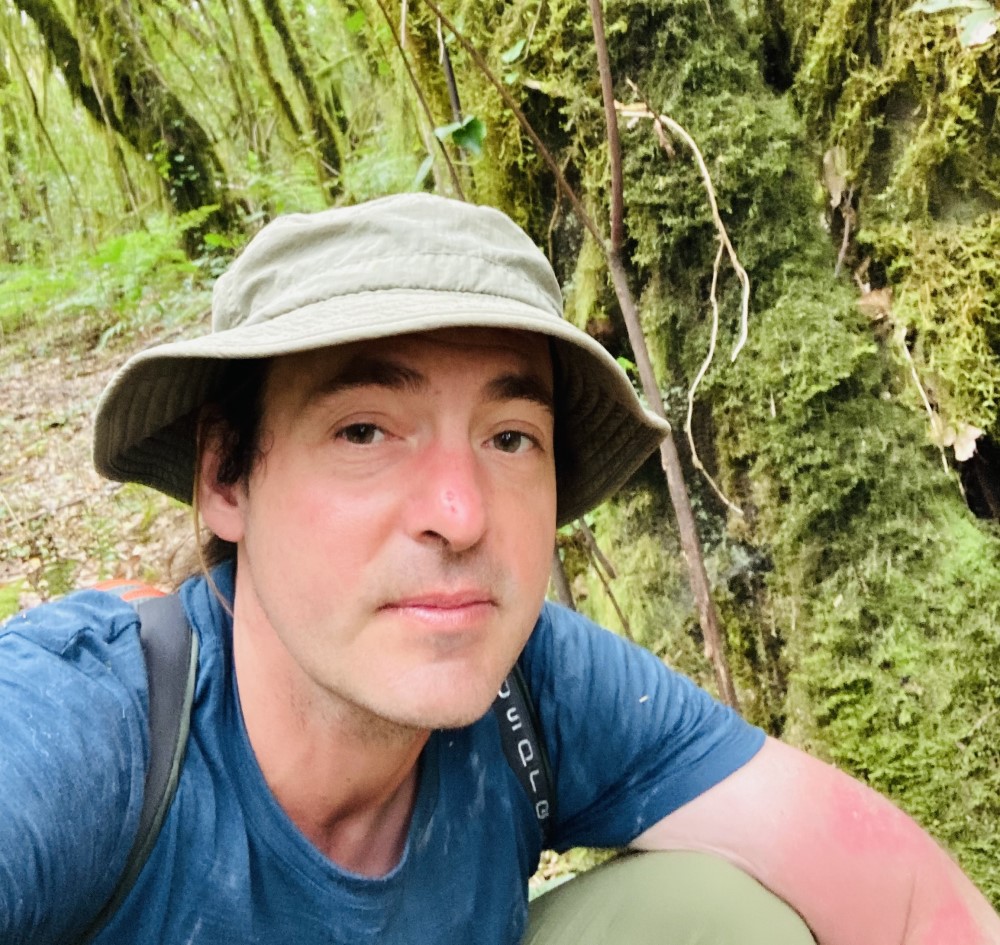
Did you enjoy reading this guide? Then support the blog and treat me to a virtual coffee.

Without coffee I won’t get out of bed and can’t have new adventures:)
Note: This article contains affiliate links marked with an asterisk (*), which lead to online retailers like Amazon. If you click on one of these links and make a purchase I receive a small commission that helps fund this blog. It’s the best way to say thank you if you enjoyed the post. Of course, this does not incur any additional cost to you.
What’s your take on all of this? Do you plan to trek in Nepal in the near future? Or are you perhaps currently there? Then head straight to the comments! I’d love to hear from you!
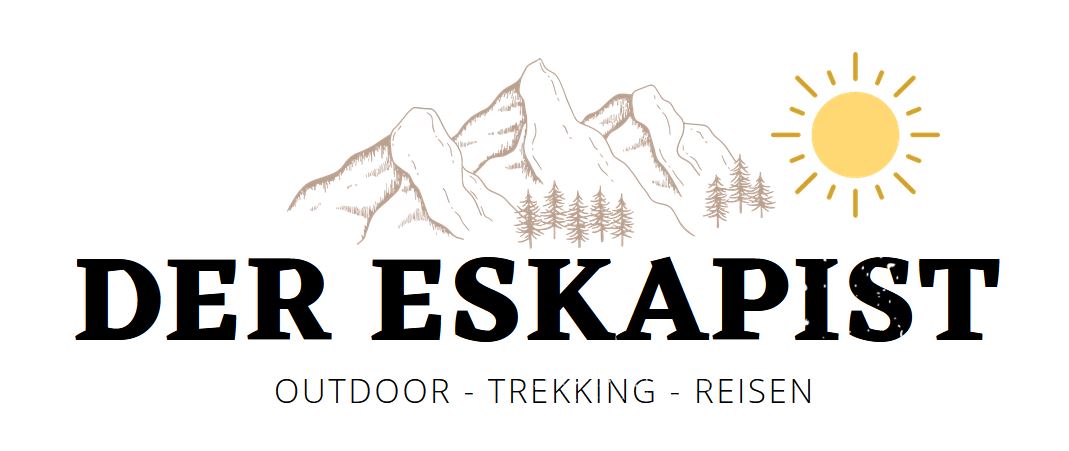

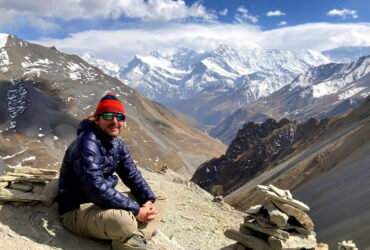
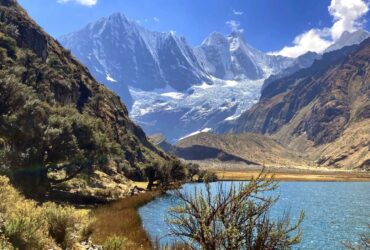

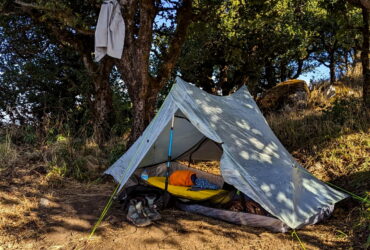


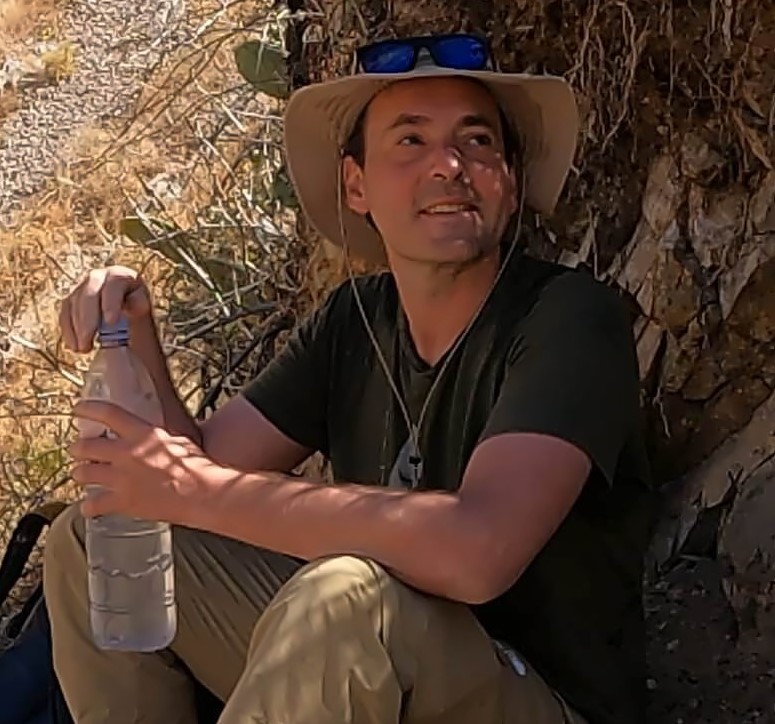


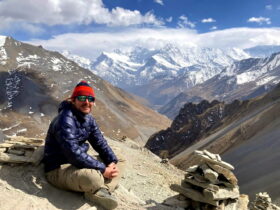






Guter Artikel. Ich bin selbst viele Male als Fotograf in Nepal gewesen und habe die meisten Treks gemacht, oft mehrmals. Immer solo, ausser wenn guide vorgeschrieben war (e.g. Manaslu). Das Hauptproblem war: Diese lizensierten (!) guides waren zwar nette, aber voellig inkompetente und unerfahrene junge Burschen. Im Ernstfall waeren sie voellig nutzlos gewesen. Deshalb mein einziger Kritikpunkt an deinem Artikel: das Argument dass so ein ein guide hilfreich sein kann, ist nicht nachvollziehbar. Sie sind nur teurer Ballast.
Hi und vielen Dank für deine Rückmeldung,
ich würde aber nicht pauschal sagen, dass ein Guide immer nutzlos ist. Es kommt ja auch auf die Erwartungen des Kunden an. Viele Leute nehmen sich z.B. einen Guide, weil sie sich damit sicherer in einem fremden Land fühlen und/oder einfach jemanden an ihrer Seite haben möchten. Das ist meiner Meinung nach auch völlig legitim, das kann jeder selbst entscheiden. Problematisch finde ich eher, dass man gezwungen werden soll, einen Guide zu engagieren, auch wenn man das gar nicht möchte.
Ob die Guides “inkompetent” sind? Hmm… in Bezug auf alpinistische Fähigkeiten in vielen Fällen wahrscheinlich schon. Die Ausbildung zum Trekking-Guide in Nepal ist halt ziemlich lax, wenn man das z.B. mit einer Ausbildung zum Bergwanderführer in Europa vergleicht. Das dauert in Nepal ca. 3 Monate, man besucht ein paar Kurse, zahlt die Gebühren, das war’s. So wurde es mir zumindest von etlichen zertifizierten Guides erzählt. Die richtigen Climbing-Guides haben aber schon ein bisschen mehr drauf. Die müssen relativ hart trainieren, das kann nicht jeder machen.
Viele Grüße
Selim
Thank you for this excellent article It was very helpful and informative.
Hi Andrew,
glad I could help you:)
All the best and safe journeys
Selim
Hi, Is there an official document for 2025 that shows solo trekking the three passes trek without a guide is still possible?
Hi Gregor,
as far as I know the latest communication from Khumbu Municipality only concerned the ban of helicopter tourism in the Everest-Region. From what I hear, the official stance on trekking without guide has not changed. So it should still be possible.
All the best
Selim
Hello Selim and hello to all,
I’m leaving to Nepal for a solo trek (a 3 -passes one with some tweaks). Thanks for all the information posted here, I’ll come back with news and updates on the topic discussed here, however no further info was mentioned anywhere so I hope it’s going to be fuss-free at the office counters 🙂 Fingers crossed, I’ll come back soon.
Wish you safe travels and a wonderful day!
Dusan
Hi Dusan,
wonderful, looking forward for any updates you might have:) I think you will enjoy the Everest region.
All the best for your trek
Selim
HI Dusan,
Can you please update us on your recent experience in Nepal and regarding the ban on solo trekking. We are plannig to do Nepal in August/September time and and shocked by this rule too.
Hi guys,
this thread appears to be one of the best first-hand info sources on that painful solo trekking ban issue – thanks for that 🙂
I have done several solo treks in Nepal over the years and of course I’m gutted about that law.
The question I currently ask myself and you guys – what if I just want to go to a village, lets say Thame or Khumjung in Khumbu or Ghandruk in Annapurna region and want to base myself there for a few days or weeks without specific itinerary / timeframe for example for rhododendron bloom, doing day hikes or short multi-day excursions or just for photography or even remote work? That type of mountain tourism is apparently not part of their thinking..
I assume I still need regional permits such as good old TIMS, but what about the guide obligation topic in that case?
Happy hiking everyone,
Robert
Hi Robert,
just based from my experiences in the Khumbu region last year: Yes, you have to put forward an itinerary with the name of the trek that you plan to do while applying for the permit. But I think this is just a formality. Also, you can pretty much give any time-frame you want, as long as you stay within your normal Nepal tourist visa. TIMS is no longer needed for individual trekkers, btw. This is just for agencies now.
All the best
Selim
Hell Selim, hello to all ! So, as promised, I’m bringing some fresh news from Everest region in Nepal 🙂
First of all the hot topic – mandatory guide. The answer is…NO. You do not need a guide and nobody asks any questions. I bought my permits in Monjo in the Khumbu region as the office in KTM was closed when I arrived due to a local festival. I came to Monjo office just before 9 am. There were no queues, total 3 people so I was ready in a few minutes. No questions, no hassle, you pay 3000 NPR for the Khumbu Pasang Lhamu Rural Munucipality permit instead of the mostly advertised 2000 NPR, and 3000 NPR for Sagaramtha Entry Permit, that’s it. The person at the window asks for a very brief itinerary and you’re done.
If anyone needs any advise or has any questions, leave a message, I’m happy to help 🙂
Safe travels!
Dusan
Hey Dusan,
thanks for your detailed feedback, that is very valuable to other travellers:)
All the best
Selim
Hey Selim,
Danke für den ausführlichen Blog erstmal, sehr hilfreiche Infos zu diesem undurchsichtigen Thema!
Mir ist bewusst dass du diese Frage sehr häufig kriegst, aber hast du seit der Veröffentlichung deines Beitrages noch Mal was neues bezüglich des Langtang Treks gehört? Ist dieser immer noch Solo möglich, oder hast du womöglich Berichte gehört dass das dort mittlerweile kontrolliert wird. Viele Quellen sagen auch dass man nur mit TIMS den Trek machen kann bzw. den Nationalpark betreten kann, das kriegt man ja aber anscheinend auch nicht mehr ohne Guide.
Vielen Dank!
Hi Karl,
ja… das ist ein Dauerthema:) Was ich gehört habe (ich bin gerade in Nepal) ist Trekking im Langtang aber weiterhin solo + ohne Guide möglich. Ich fahre übrigens morgens in die Region, werde allerdings über das Helambu reinwandern. Mal gucken, ob ich da kotrolliert werde. Werde den Artikel anschließend auf jeden Fall aktualisieren.
TIMS braucht man nirgends, das ist tot. Das Permit bekommst du inzwischen übrigens auch online, nennt sich
e-permit Hatte ich unlängst in der Annapurna Region ausprobiert und wurde problemlos überall akzeptiert. Das sollte in Langtang auch so klappen, ich werde das jedenfalls wieder so machen.
Viele Grüße
Selim